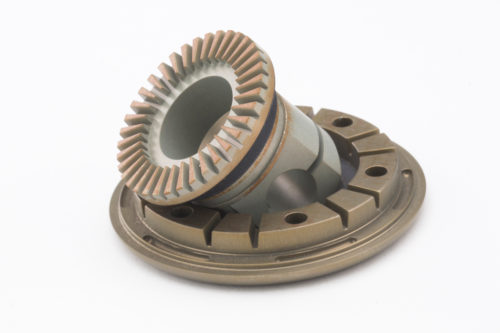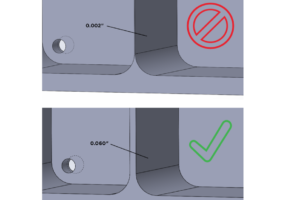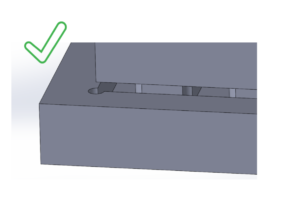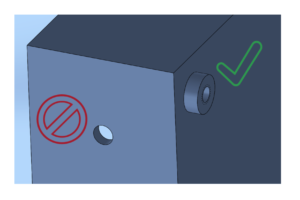Design Best Practices for CNC Machined Parts
When designing a 3D model for precision CNC machining services, the possibilities are virtually endless. But just because you can include certain features or tolerances doesn’t always mean you should.
 Precision machining has its limitations, and when engineers take these limitations into account during the design process, they can transition smoothly to manufacturing, saving valuable time and money.
Precision machining has its limitations, and when engineers take these limitations into account during the design process, they can transition smoothly to manufacturing, saving valuable time and money.
At Peerless Precision, we want our customers to have all the necessary information to create the best designs possible. That’s why we developed an eBook dedicated to design best practices for CNC machined parts.
We’re highlighting three design best practices today, but you’ll have to download the eBook to get the rest!
Design for Manufacturing: Best Practices for CNC Machined Parts
High-precision parts with tight tolerances are challenging to design and machine. Here are a few of the most common design tips we offer engineers to improve part functionality, lower costs, and save time:
- Avoid thin walls when possible
- Design fractional diameter holes in the corners of mating parts
- Use bosses to define surface flatness
1. Avoid thin walls when possible
Leveraging our precision machining expertise, we can achieve a wall thickness of about 0.003” depending on factors like part type and material. Still, the thinnest walls possible typically aren’t the most functional or budget-friendly option for your part.
Recently, a customer requested a wall thickness of 0.002” for titanium cones, but together, we determined that 0.003” or 0.004” would be sufficient. Machining a slightly thicker wall allowed us to streamline our precision machining process and deliver the customer’s parts faster.
2. Design fractional diameter holes in the corners of mating parts
Mating parts, like valve or piston sleeves, require a high level of precision, but we can still find ways to save time and money machining them.
For instance, it’s possible to optimize cost and lead time by designing fractional diameter holes in the corners of the part, which enables us to machine the part’s profile more easily. While this solution isn’t appropriate for show parts or other parts with high aesthetic standards, it’s an option to consider for certain projects.
We ensure that mating parts fit together perfectly by asking our customers for samples to use as fit gauges. Although we always build parts to exact specifications, having a sample part to check the fit against is helpful.
A final note on designing mating parts: remember that tolerances stack, so if you’re using a tolerance of +/- 0.005”, you’ll need a clearance of at least +/- 0.010” between parts.
3. Use bosses to define surface flatness
Surface flatness is achieved when each point along the surface of an object lies in the same plane. We can check for flatness by seeing how the surface fits between two parallel planes.
When machined surfaces need a high degree of flatness, bosses can be used to clearly define what areas need to be flatness controlled. Bosses can also simplify painting and other finishing operations.
Flat surfaces are difficult to machine, but at our precision machine shop, we can achieve superior surface flatness. Understanding the minimum surface flatness for your part’s functionality is a great way to save time and money during precision machining.
For more helpful design tips for CNC machined parts, download our eBook today! When you’re ready for precision machining services, go ahead and request a quote on our website.








Comments are closed